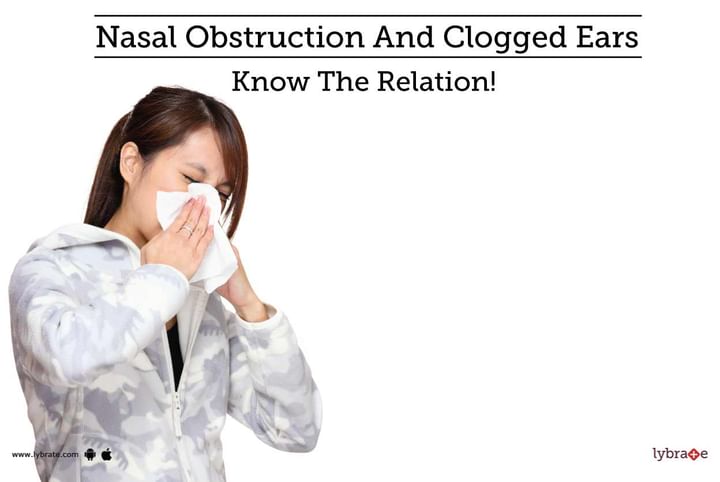Get the App
For Doctors
Login/Sign-up
Last Updated: Dec 21, 2019
BookMark
Report
Nasal Obstruction And Clogged Ears - Know The Relation!
There is a strong connection between the ears, nose and throat, as any ENT or Ear Nose Throat specialist will be able to tell you. When there is any kind of congestion or obstruction in the nasal passages, one can also feel some effect in the ears with the symptoms going from mild to severe. So how can nasal obstruction cause clogged ears? Here is our explanation!
- The Connection: To begin with, let us understand the connection between the ears and the nose. There is an opening that can be found in the back of the nose, which leads into a tunnel called the Eustachian Tube. This tube goes into the ears and creates some amount of pressure when the nasal passages get blocked. This pressure can be felt as clogging of the ears and can usually be eradicated with the help of a pop in the ears. This pop can be brought about by pinching your nose and trying to breathe, or even yawning hard or indulging in some gulping or swallowing motion as well.
- Mucosal Swelling: The swelling within the patient's nose usually points at the build-up of mucus which can make the nasal lining thicker, thus making the act of breathing that much more labored and difficult. This obstructs the nasal tract, in plain and simple terms. This swelling usually spreads to the tunnel or the Eustachian Tube, which can become swollen and even shut, consequently leading to a feeling of having clogged ears.
- Negative Nasal Pressure: When the pressure inside the nose is built up in a negative way due to the obstruction that makes the patient breathe even harder, then the ears end up taking the pressure. This makes them clogged. This negative pressure usually manifests in the back of the nose where the Eustachian Tube is located, which creates a build up in the ears as well. This can also lead to a ringing pain when a patient tries to suck in the air too hard due to the obstruction.
- Bernoulli's Principle: If we are to incorporate air in place of fluid and liken the action of breathing with an obstructed nose, with the action of sucking fluid in through an obstructed straw, then the fluid dynamics would apply to this case. As per these fluid dynamics, more rapid flow of fluid can lead to decreased pressure on the surrounding areas. This can be applied to the blocked nose where air must pass through faster and with more fluidity so as to ensure that there is less pressure on the ears, which will keep them from getting clogged.
Persistent clogged ears and nasal congestion can also point towards infection and should be checked by a doctor immediately.
In case you have a concern or query you can always consult a specialist & get answers to your questions!



+1.svg)
